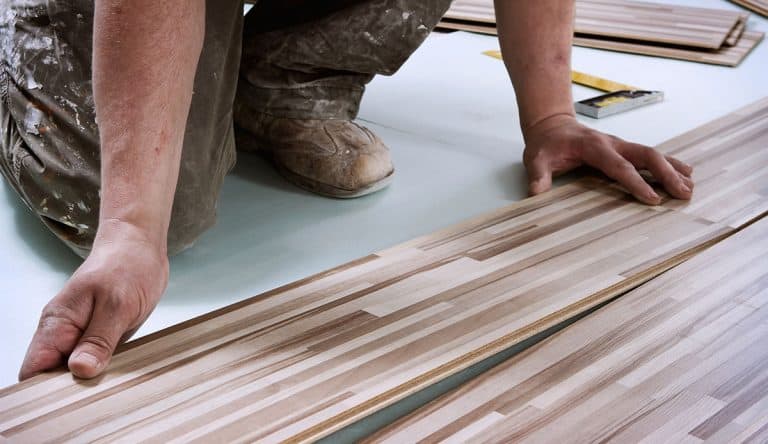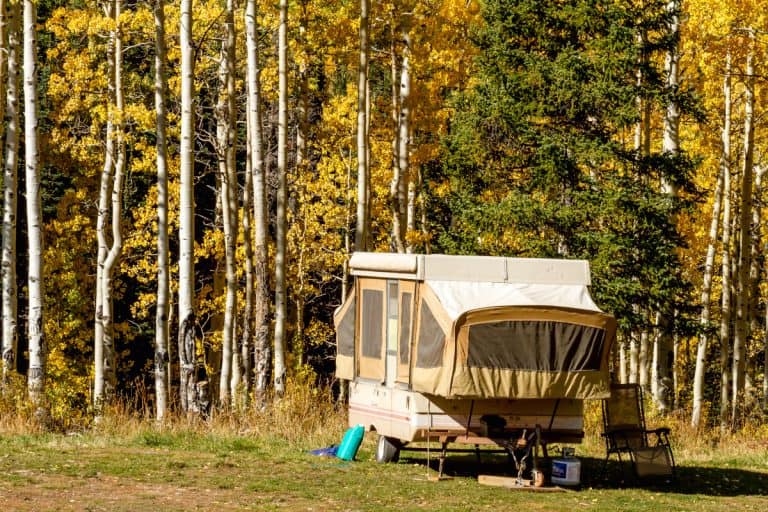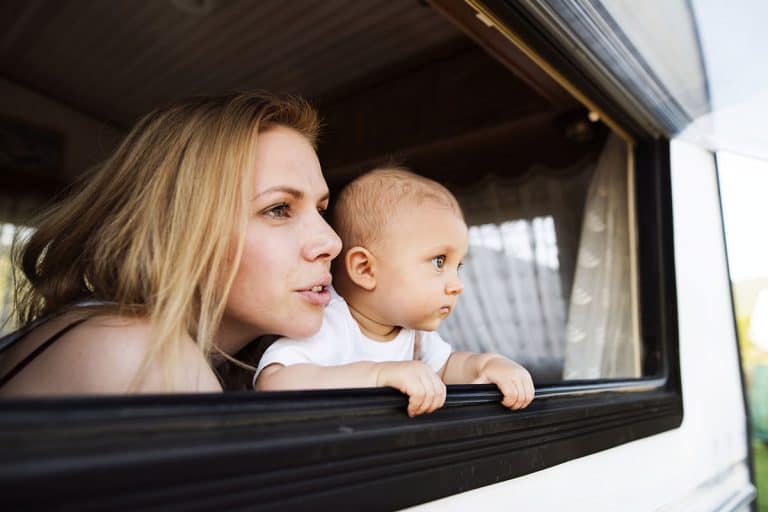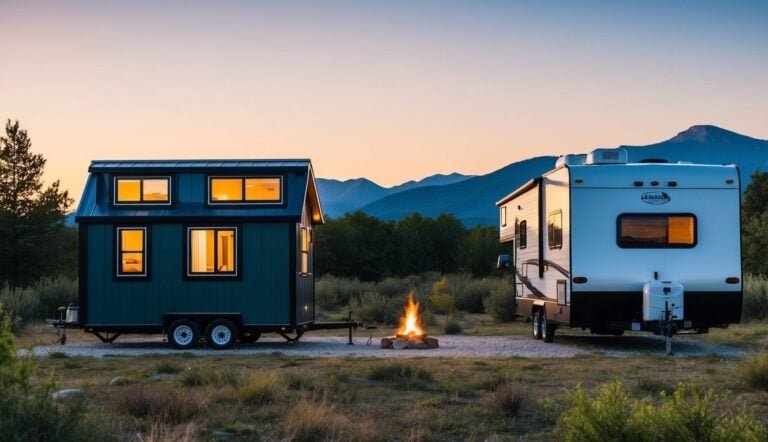Are Caravans Safe in a Thunderstorm?
For those who travel and live in a caravan for a short or long period, you are bound to get caught in a thunderstorm every now and then. And, with thunderstorms come lightning and flooding, which can both pose a threat to your caravan in certain situations.
Caravans can be safe in a thunderstorm as long as all windows and doors are closed. Since there are tires on caravans, the rubber helps to ground electricity should there be a lightning strike. However, it is always recommended to seek covered shelter during severe thunderstorms since a smaller caravan may be at risk of damage from high winds or nearby falling trees.
Lightning strikes may be random, but there are some things that tend to attract them more than others, such as tall trees near your caravan. However, there are a few things you can do to reduce your exposure to lightning and flooding and ensure you and your caravan’s safety.
How to Keep a Caravan Safe in Thunderstorms
Generally, caravans and other camper vehicles alike are enclosed with sturdy walls, which create a sort of Faraday cage. A faraday cage is a metal cage that allows lightning to run through it, but it does not harm those within the cage. This is ideally how a caravan would redirect the electricity away from you should a lightning bolt strike it.
For the faraday cage theory to work on a camper, the windows and doors must be closed. This keeps the current flowing on the outside and into the ground if your caravan does happen to get struck by lightning. If the windows or doors are open, then it could stop the current and create a dangerous situation. Keeping them open will only expose the inside of your caravan to the weather, which will not be good for you or the caravan.
Pop-Up Caravans & Thunderstorms
However, if your caravan is a pop-up, then it may have soft sides on it. There is still metal at the top to form the roof, but it is not usually enough to create a faraday cage effect. For that reason, while it may be safe enough to be in a pop-up caravan during a light rainstorm, it is best to be in a solid enclosure once the thunder arrives.
Avoiding Lightning Strikes
Of course, rather than waiting for lightning strikes to come to you, it is best to take precautions to make sure it doesn’t happen at all.
For example, some people believe that moving under trees will protect them from the harsh elements, but they are only more likely to get hurt. It is best to have your caravan isolated and away from trees so that nothing around you can influence or attract lightning strikes.
Where Should Campers Stay During a Thunderstorm?
If you are out in the open, obviously get into a shelter of some sort. Being in a shelter almost decreases your chances of getting struck by lightning to zero. If there is ever a forecast of a severe thunderstorm, try not to be outside leading up to it just in case it decides to hit your area earlier than predicted.
Note: When a storm is beginning to start, you also have the ability to estimate how long it will be until it arrives in your area. When you see a flash of lightning, no matter how far off in the sky, begin counting in seconds. When you hear thunder, stop counting, then divide the number of seconds by 5. This will tell you how many miles away the storm is and give you an idea of when you need to be indoors.
If you are in a caravan that has a driving cab, then that would be the safest place to sit during a storm that has lightning. This goes along with the idea that being in a car is the safest place during a storm due to the rubber tires grounding the entire vehicle.
If there is no driving cab in your caravan, then sitting in the actual caravan can be okay as well. However, do not let your head touch the top of the caravan. Since this is the highest part, it is the most likely to be struck by lightning. If you are touching it, then it is more likely to affect you as well. Sitting down and not touching the outsides of the caravan is ideal.
Be sure not to touch the metallic parts either because these are the pieces that, if lightning does strike, will take the electricity and direct it away from those within the caravan. If anyone is touching these parts, they may feel that electrical charge, and that could hurt them regardless if there is a lot or little electricity.
Thunderstorm Safety Tips
- Even if there is no lightning, it is best to stay away from trees during a storm. If there are strong enough winds or rain, then the trees have a possibility of being struck down. A massive tree falling could severely damage your caravan and may even severely injure you.
- Make sure your caravan isn’t parked in a flood zone; during heavy rainfall, the last thing you want is to be stranded in the woods for longer than you’d like. If you’re not sure whether you’re in a flood zone, it is always best to try to get to higher ground when possible, but make sure you remain a reasonable distance from tall trees.
- If there is a severe thunderstorm, it is advised not to be in a caravan even if it has hard sides. This is because often, there are adverse winds with severe thunderstorms, and a small caravan may not be able to withstand these winds.
- If you are stuck outside your caravan during a thunderstorm—say you’re out hiking a trail nearby—then crouching almost in the fetal position with your hands behind your neck will help you more than standing up. If you are standing up, you are closer to the sky, albeit only a tiny bit; however, this gives lightning an easier target to strike.
- Again, if you’re stuck outside, make sure you’re not holding onto anything metallic or conductive of electricity, like an umbrella. Never hold an umbrella while there is lightning in the sky. The metal in the umbrella can act as a conductor for the lightning and hurt you even more. It isn’t fun to be soaking wet, but you are more likely not to be struck by lightning that way.
Conclusion
If you are in a hard-walled, enclosed caravan during a thunderstorm, chances are you’ll be safe. The most you’ll probably experience is some heavy rain, which won’t affect you as long as you’re parked in a no-flood zone or on higher ground. In addition, the enclosure of a caravan can protect you due to its Faraday cage effect. As long as you avoid touching the walls or any other metallic objects inside, and make sure all doors and windows are closed, you can stay safe.
However, this is different for a pop-cup caravan or if there’s a severe storm. In these cases, it is highly recommended that you try to seek shelter, such as under a covered building or cabin, to reduce your chances of being struck by lightning or injured should high winds or nearby falling trees damage the caravan.





